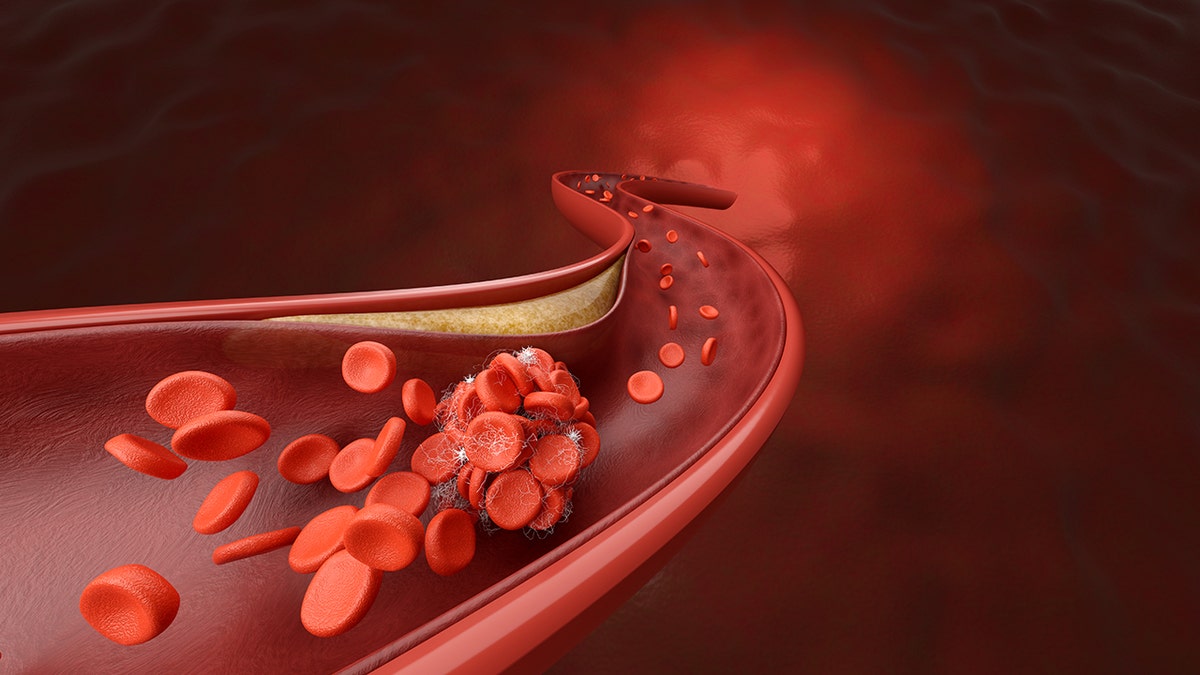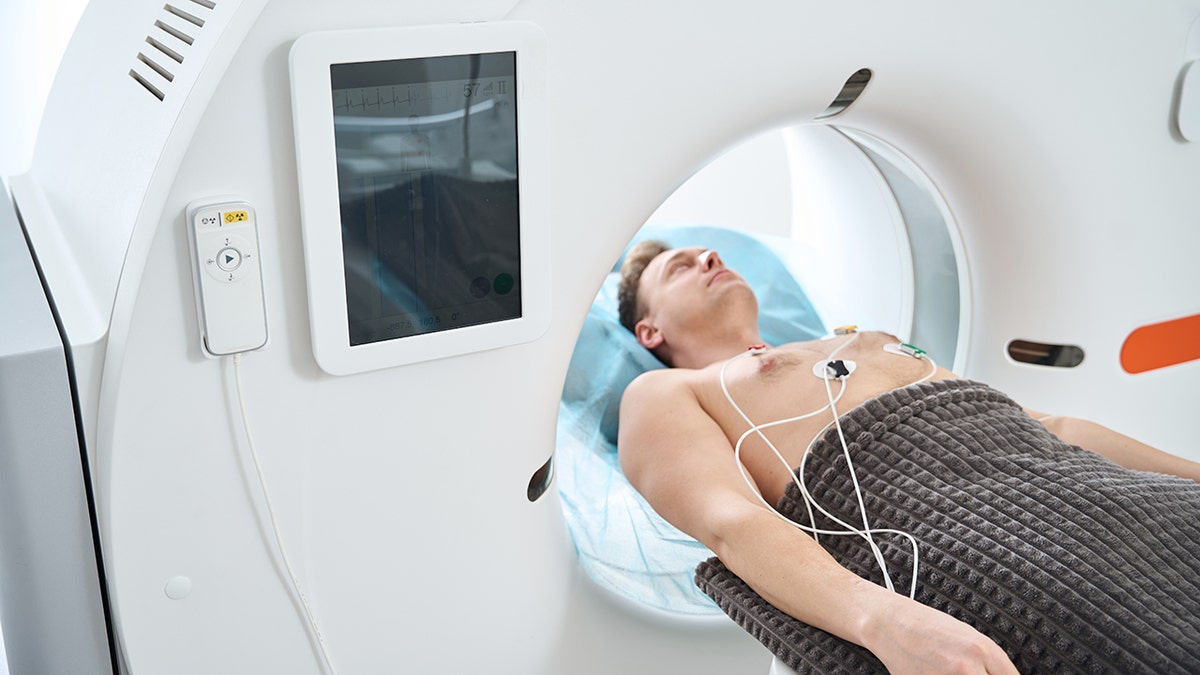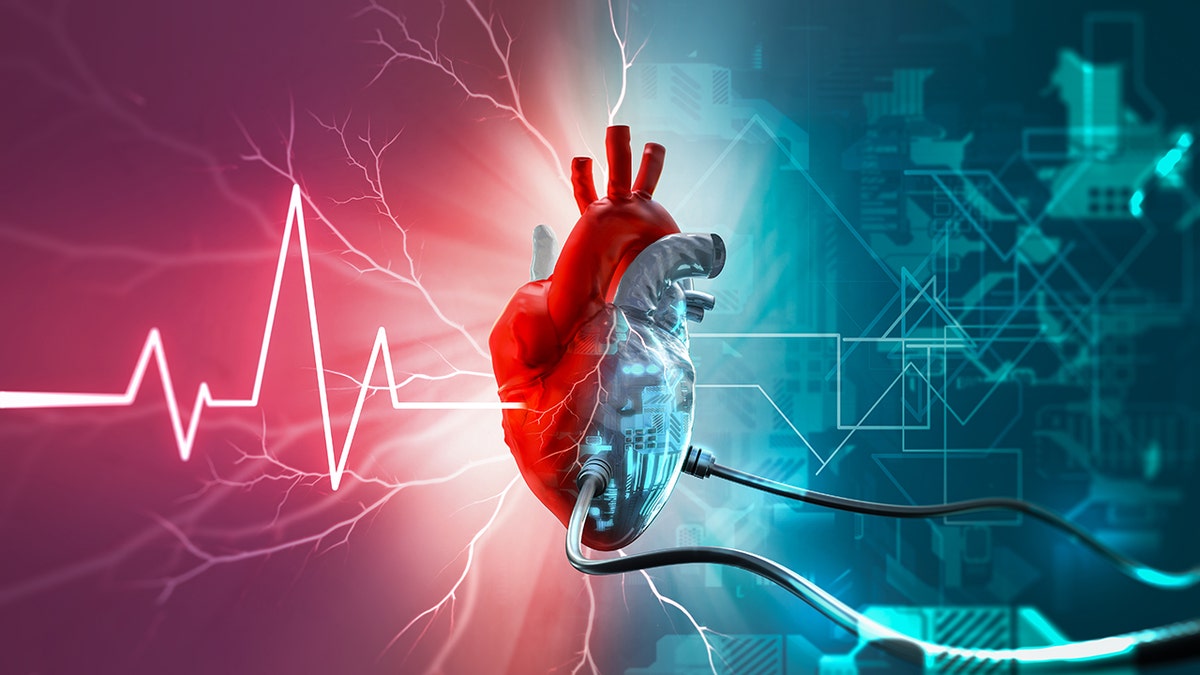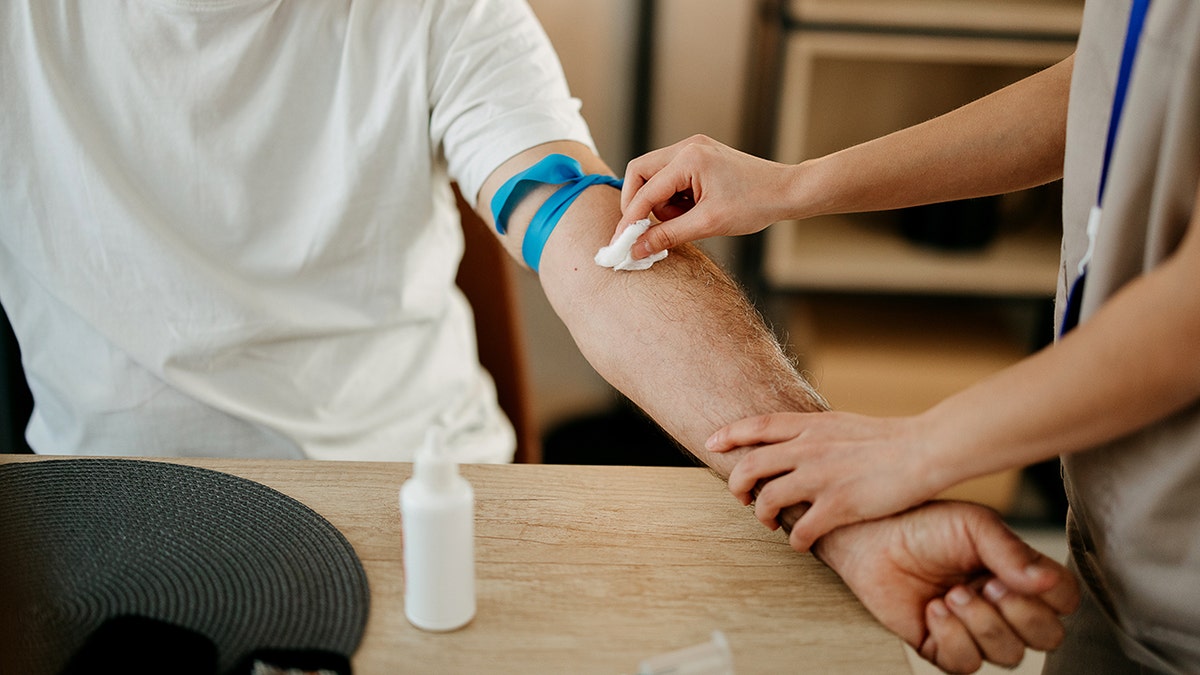AI technology could be used to detect potentially deadly blood clots before they strike.
That's according to scientists at the University of Tokyo, who say they have created a non-invasive way to observe clotting activity in blood as it occurs.
The new artificial intelligence tool uses a powerful microscope to monitor platelets in real time, the researchers shared in a press release from the university.
WHAT IS ARTIFICIAL INTELLIGENCE (AI)?
Platelets, which are tiny blood cells that help form clots to stop bleeding, play a "crucial role" in heart disease, particularly coronary artery disease, according to Dr. Kazutoshi Hirose, lead author of the study.
If the platelet count is too high, it can increase the risk of blood clots.

Scientists at the University of Tokyo have discovered a non-invasive way to observe clotting activity in blood as it occurs. (iStock)
To prevent dangerous clots, patients with coronary artery disease are usually treated with anti-platelet drugs.
"However, it's still challenging to accurately evaluate how well these drugs are working in each individual, which makes monitoring platelet activity an important goal for both doctors and researchers," Hirose said in the press release.
How the tool works
Traditional methods of monitoring platelet activity often rely on indirect measurements or invasive procedures.
With the AI tool, a high-powered microscope works like a "super-high-speed camera that takes sharp pictures of blood cells in flow," said Yuqi Zhou, assistant professor of chemistry at the University of Tokyo, in the release.
ARTIFICIAL INTELLIGENCE TRANSFORMS PATIENT CARE AND REDUCES BURNOUT, PHYSICIAN SAYS
"Just like traffic cameras capture every car on the road, our microscope captures thousands of images of blood cells in motion every second," he said. "We then use artificial intelligence to analyze those images."
The AI can distinguish between a single platelet ("like one car"), a clump of platelets ("like a traffic jam"), or even a white blood cell tagging along ("like a police car caught in the jam"), Zhou described.
"Right now, doctors often give blood-thinning drugs and hope they are working. With this method, they could actually see if the treatment is working."
"This technology stands out because it allows doctors to directly observe platelets in the bloodstream and measure how they interact and form clumps in real time," said Keisuke Goda, a professor at The University of Tokyo’s chemistry department, in the release.
"Our studies have shown it to be highly effective in patients with coronary artery disease, the most common cause of heart attacks and one of the leading causes of death in the U.S. and the world," he added.

Traditional methods of monitoring platelet activity often rely on indirect measurements or invasive procedures, according to the researchers. (iStock)
When the researchers tested the technique on over 200 patients, they found that people with more serious heart problems had more clumping in their blood.
A blood sample taken from a patient's arm and tested with the tool resulted in nearly the same results as blood taken directly from the heart's arteries, they noted.
Treatment implications
Harvey Castro, a Texas-based emergency physician and AI expert, described the implications as significant for patient care.
"Today, we rely on indirect lab markers or invasive cath-lab blood draws to judge clot risk," Castro, who was not involved in the study, told Fox News Digital.
CLICK HERE TO GET THE FOX NEWS APP
"This technology turns an ordinary venous draw into live telemetry of platelet behavior, giving answers in seconds rather than hours."
These advancements have the potential to change the standard of care for patients with coronary heart disease, according to the researchers.
CLICK HERE TO SIGN UP FOR OUR HEALTH NEWSLETTER
"Typically, if doctors want to understand what's happening in the arteries, especially the coronary arteries, they need to do invasive procedures, like inserting a catheter through the wrist or groin to collect blood," said Hirose.

In studies of the tool's effectiveness, a regular blood test from the arm showed nearly the same results as blood taken directly from the heart's arteries. (iStock)
"What we found is that just taking a regular blood sample from a vein in the arm can still provide meaningful information about platelet activity in the arteries."
For more Health articles, visit www.foxnews.com/health
Goda agreed that the tool could enable safer, more personalized treatments for heart disease patients.
"Right now, doctors often give blood-thinning drugs and hope they are working," he said. "With this method, they could actually see if the treatment is working in each patient."
Potential limitations
Castro cautioned that the technology is not yet ready for widespread use.
"The microscope is cutting-edge research gear, not yet a bedside device," he told Fox News Digital. "We need miniaturization and cost drops before every ER can use it."

"What we found is that just taking a regular blood sample from a vein in the arm can still provide meaningful information about platelet activity in the arteries." (iStock)
Looking ahead, after further research, Castro envisions that this innovation could change point-of-care decision-making for patients.
"Five years from now, I can imagine a point-of-care analyzer that lets me adjust antiplatelet drugs and how I titrate oxygen quickly and safely for the patient in front of me," he said.
Reem Amro is a lifestyle production assistant with Fox News Digital. She and the lifestyle team cover a range of story topics including food and drink, travel, and health.
.png)
 German (DE)
German (DE)  English (US)
English (US)  Spanish (ES)
Spanish (ES)  French (FR)
French (FR)  Hindi (IN)
Hindi (IN)  Italian (IT)
Italian (IT)  Russian (RU)
Russian (RU)  7 hours ago
1
7 hours ago
1









Comments